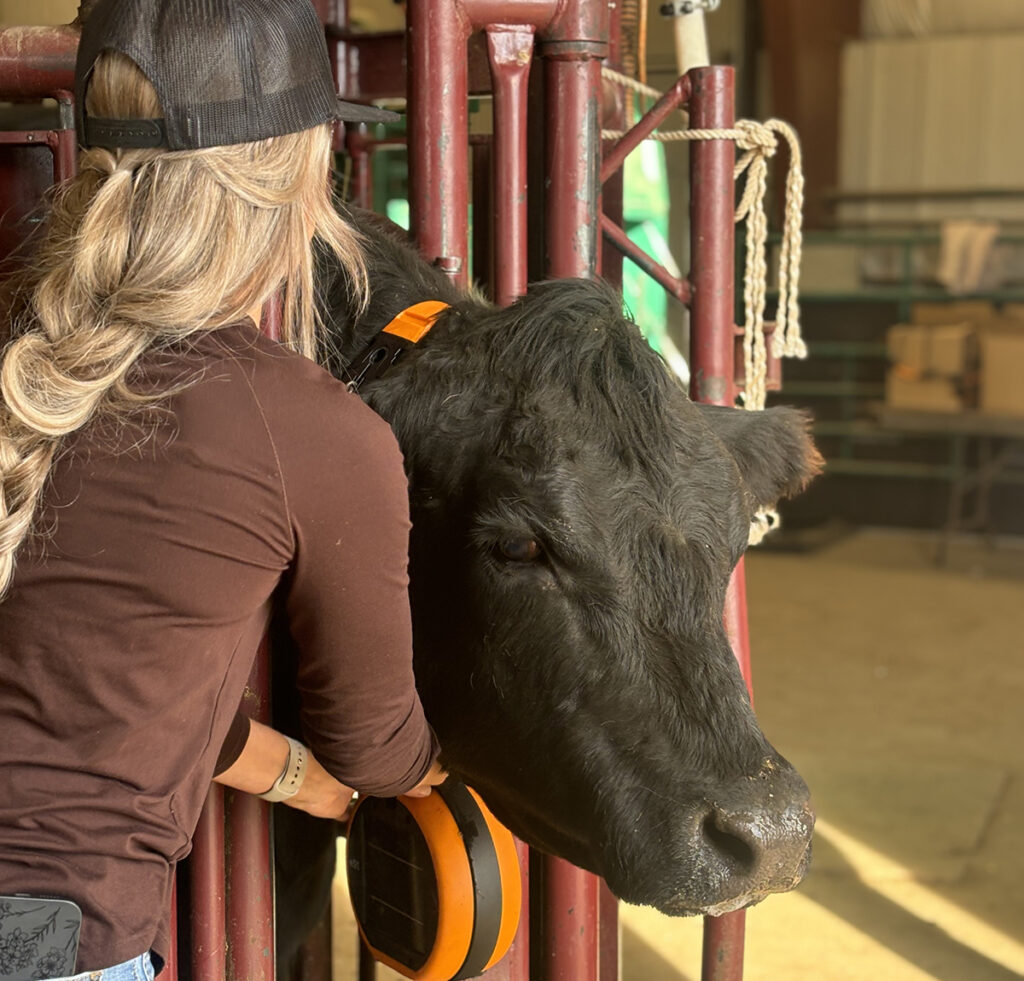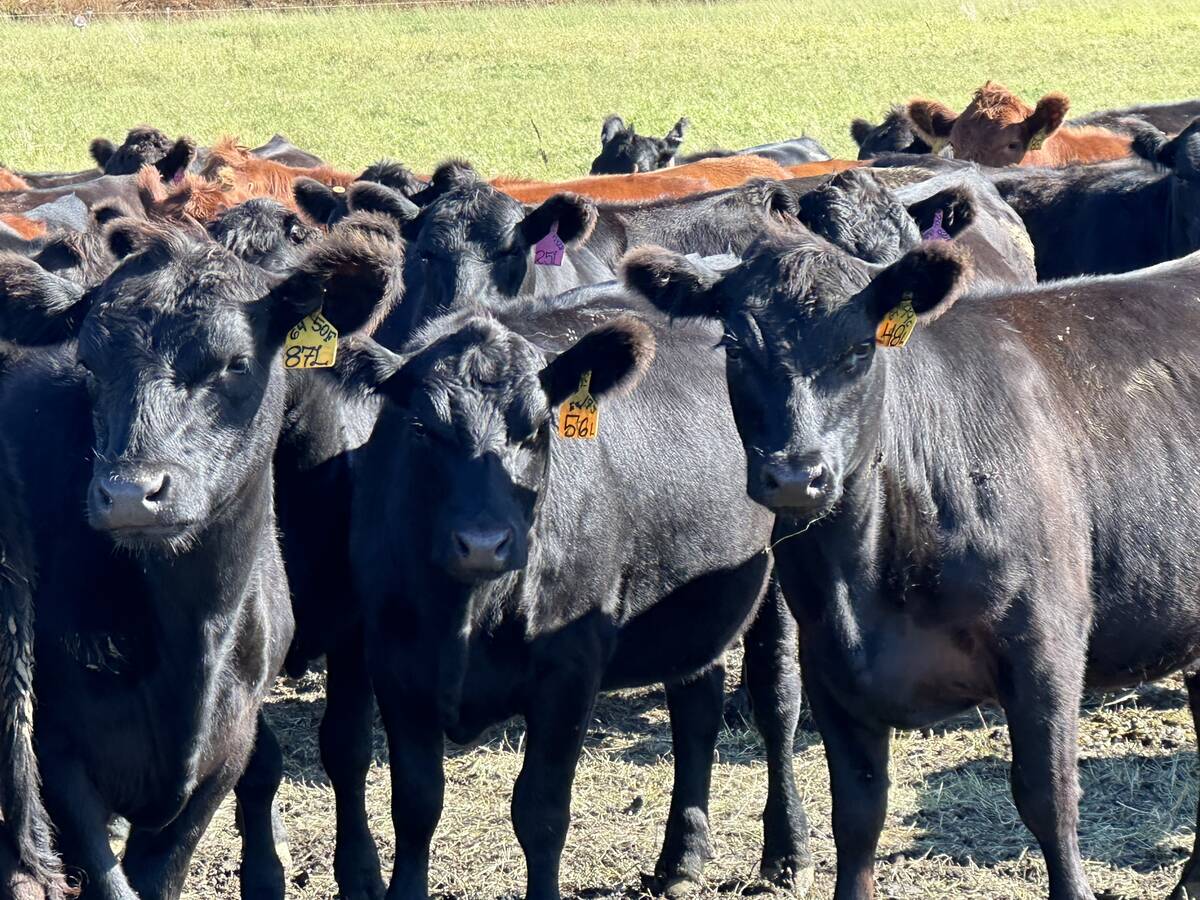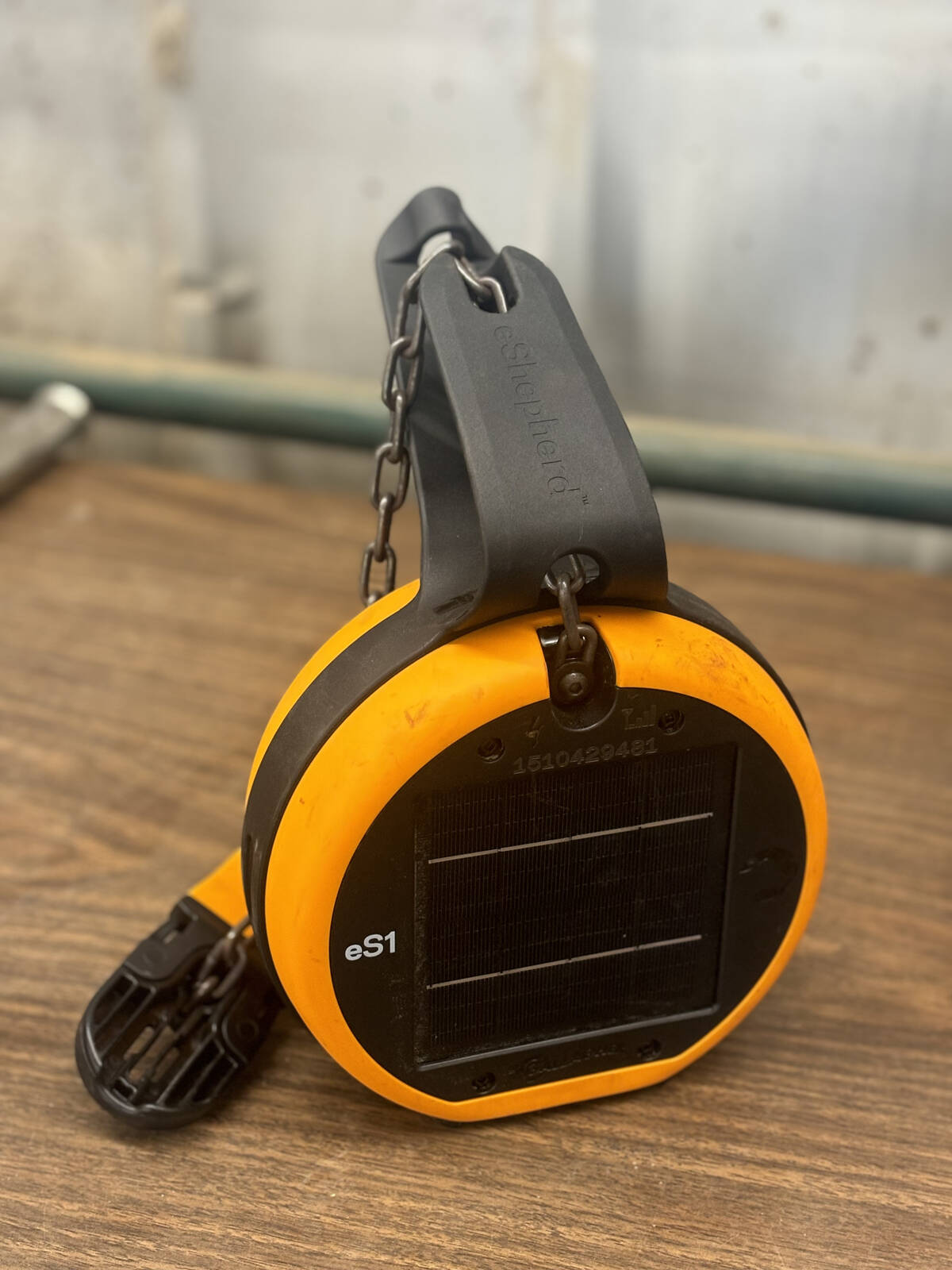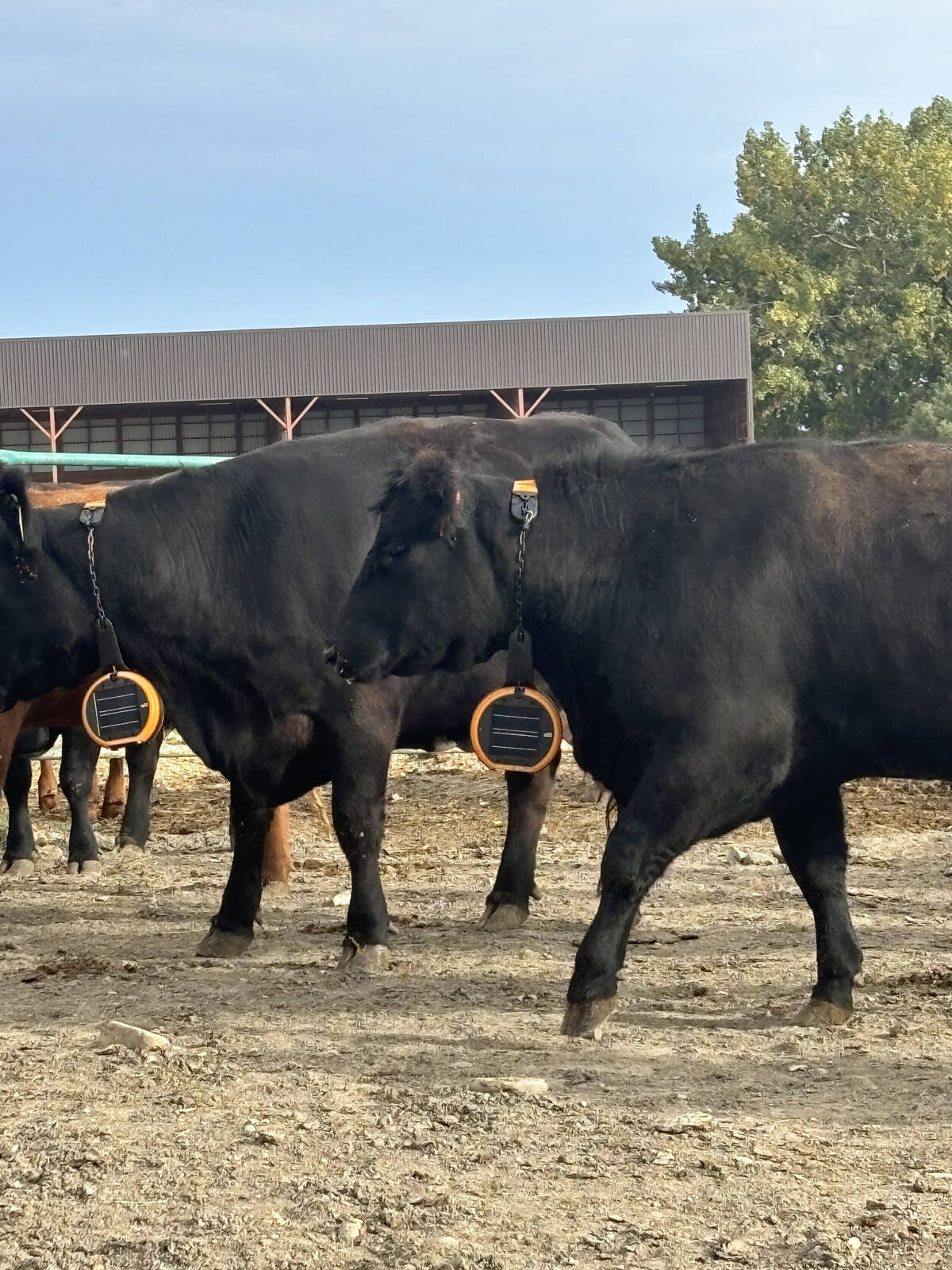Virtual fencing provides net positive results

Virtual fencing and e-collars are being seen as a transformative technology in herd and pasture management.
The technology is currently undergoing many trials across North America, at varying lengths and scales, and many producers are also giving it a try.
While there are challenges and learning curves, those who use the systems back the strong claims.
Read Also


Beef farmers find big premiums for replacement heifers
The price of replacement heifers is through the roof in Western Canada, and beef producers are getting creative when marketing cattle to take advantage
Barrington Ranch near Keremeos, B.C., has been using the Gallagher eShepherd system in collaboration with Thompson Rivers University masters student Thomas Alexander, whose thesis is on the use of virtual fencing and drones for sustainable range land management.
John Church, Alexander’s thesis supervisor and a natural resource science professor at the university, said e-collars were the best option for Barrington Ranch.
“A lot of them (fences) had been damaged by wildfires in recent years,” he said.
“And the cost to replace the fence that got burned was roughly estimated at half a million dollars. But the cost to implement the collars instead was about $80,000.”
Barrington uses crown range land for summer grazing, which is a common practice in British Columbia. Fences are maintained by the government, but when wildfires go through, it can take years to rebuild them.


To get back on the land quickly, Barrington purchased 180 Gallagher collars to trial the technology.
However, cell service or base stations with a connection are required to get things running.
Cell service is minimal where the ranch is located, near Crater Mountain, so Alexander set up two base stations powered by solar panels and batteries with a Starlink internet connection. The area’s topography means the bases provide a connection range of up to 14 kilometres for the herd.
The collars also provide GPS co-ordinates and movement updates on the animals, which can be used to check on individual cows.
Church often uses his drones to obtain updates by inputting the exact GPS co-ordinates and flying over them. He can then see if the animals are relaxed and grazing and check their physical condition.
GPS locating also assists with the movement of cattle.
Alexander moved the collared herd down the mountain range without even being with the herd or the ranch hands. He watched the herd’s movement via the computer software, and as they moved forward and down the mountain he would adjust the fence to be right behind them so they couldn’t turn back.
However, the process isn’t perfect.
There were a few cows that broke back, unafraid of the adjusted boundary. For those, ranch hands would wrangle them back to the rest of the herd and down the mountain.
Despite the few setbacks, the ranchers are happy to be able to get the most out of the land. For Barrington, the ease and positive points outweigh the negatives and they’ll be increasing to 400 collars this year.
“This is by far the largest trial that Gallagher has ever done,” Church said.
“We were among the first to get the Gallagher system in Canada. By far the largest scale, and the most rugged terrain.… If you can make it work there (in Keremeos), you can make it work anywhere.”
Another virtual fencing success story is Cory Miller, a beef producer in Missoula, Montana, who was one of the early adopters of virtual fencing.
Located just south of the Missoula airport, he runs 200 head of cattle on 2,600 acres under an intensive grazing program focused on soil health and regenerative agriculture.
When he started farming in 2016, it was with 26 acres of poor quality land. To improve it, he obtained a few head of cattle.
“Number one benefit of cattle is the rate at which you can increase fertility and soil is much quicker,” he said.
“We were looking for, what’s the one way that I can improve this land? And it’s grazing cattle, then adequate rest, and frequent moves through the paddocks.”
After starting with two cows and a bull, he’s since grown his breeding herd to 84 cows and will add another 34 yearling heifers this summer.
Miller purchased 80 Vence e-collars in 2022 to keep up with his herd growth and goals of intense rotational grazing.
“At that time, we had acquired the big ranch,” he said.
“And the decision was, are we going to put money into fencing or are we going to put money into technology? And the choice I made was to put money into technology. We fixed fence so we had a good perimeter fence, but the thought was that we would be able to graze cattle using virtual fence through the growing season.”
This plan allowed Miller to implement regular moves without having to move the cows himself, and to scale to herd needs as time went on.
But after a year, he realized the Vence system wasn’t able to do exactly what he wanted.
Its technical specifications don’t recommend creating paddocks smaller than 160 acres because it could impact the communication of the collars and accuracy of the system and paddock boundaries. Miller doesn’t have 160 acre pastures, and with his herd size, he wanted to keep things small for intensive grazing.
“Intensity of grazing is important,” he said.
“And with that, the system has to do one thing well, and that is keep cattle contained. I don’t care what other bells and whistles it has — if it can’t keep cattle contained, it’s not something I need. It’s like, I should just build fence. So, we struggled.”
After a year with Vence, he tried a few NoFence collars with part of the herd while others were on Vence, and it enabled grazing down to half an acre. This year, he has completely switched over to NoFence and is increasing his collars to 100 to take care of the entire breeding herd.
Miller was originally a bit hesitant with trying NoFence because of the issues he was having with paddock sizes and cattle, and was ready to abandon virtual fencing.
However, he said he’s glad he gave it a go because he can have the cattle graze down to less than a quarter acre with no containment issues. As well, the virtual boundary allows him to move the cattle once to multiple times a day if needed.
“We’re getting performance that we didn’t think was possible when we started, and now we’re testing it and we’ve replicated it for two seasons.”
He said he’s learned from his mistakes over the last three years.
For one thing, he found it’s a lot easier to train the heifers than the cows, and training is important.
Over a two week period, those with collars are placed in a pasture with a strong perimeter fence and the virtual fence overlapping. As time goes on, the virtual boundary is moved in from the perimeter, forcing the herd to learn the audio cues and that a zap will occur if they try to cross.
Once they are trained on the collar and fences, the cattle don’t need reintroduction. The next spring, they remember how the collars work with ease.
His other learning curve was the building of paddocks. He found that the most effective implementation of the technology is what’s most efficient for the operator and the herd.
“If you follow the fundamentals of good grazing, and then you just build your paddocks where you’d build your electric fence, it’s pretty simple,” he said.
Long, narrow paddocks and curved or circular paddocks don’t work for virtual fencing, he said — and he tried both.
Putting a narrow alleyway to a watering point from a wide rectangle or square paddock ultimately confuses the cattle, and they’ll have trouble finding the water.
He tried putting a watering system on wheels attached to an irrigation pivot as a way to automatically move the water and so that all he’d have to do was adjust fence, but that confused them, too.
“(I thought), ‘it’ll be so cool,’ ” he said.


“Well, yeah, but then we didn’t want cattle going outside of that track and found that they didn’t really perform very well in that environment.”
He follows “textbook grazing” practices but has evolved them for the virtual fencing.
It’s a lot of squares and wide, small rectangles so the cattle can easily understand. As well, mobile waterers connected with 1.5 inch poly line allows for flexibility of paddock locations.
Producers and researchers are having positive results with the technology, and they also say it’s simple to set up and cattle adjust well.
In Miller’s experience, both Vence and NoFence were easy to connect between the system and collars and to operate. All it took was the set-up of the paddocks, naming the collars to know which cow they correspond to and playing around to familiarize himself with the system.
He said it took about eight hours to fully establish everything the first time to how he wanted it.
“For my generation, it’s always, every day, is some new technology,” he said.
“I mean, I’m 42, so we’ve got to see some pretty cool stuff happen in our lifetimes.”
Brianna Elliot, the project lead for the Technology Access Centre for Livestock Production at Olds College in Alberta, echoed Miller’s sentiments, saying she’s worked with NoFence and Gallagher, and each system and their interfaces are easy to use and set up.
They’re also easy to work with because the systems use solar powered, rechargeable batteries that are reliable.
So far, she hasn’t noticed any issues but has some worries with heavy bush areas and spots with less direct sunlight. However, that’s something she will be watching for in her research trial this year.
Animal welfare is another key focus for her trials.
She set guidelines for treatment, such as how long to let a cow become familiar with the collar. The collar is removed after five minutes if the cow doesn’t settle.
“We only had one that didn’t adjust within five minutes,” Elliot said.
“So we removed the collar from that cow, but the rest, it (the collar) didn’t affect their grazing at all. Their intake was the same. It didn’t bother them whatsoever.”
Similar to Miller, Elliot had an adaptation period for the cattle so additional aspects of welfare and use could be monitored.
A few days before the trial began, the herd was put to pasture wearing collars but they weren’t activated. After a few days, the collars were activated.
“It was actually incredible how quickly they figured out where that (boundary) was and how few times they actually used the electric stimuli because they used the audio cues. They figured out the audio cues within four days, most of them even less than that.”
The audio cues are quite loud and can be heard from a fair distance. During this trial, Elliot only had one cow go through the boundary and prompt the electric shock, which is approximately 20 per cent of the voltage of a conventional electric fence.
“It zaps three times, and then it just shuts off. Like, it’ll override,” Elliot said.
“Then she walked back with the rest of the herd. I turned her collar back on, and she didn’t leave again.”
The collar also has a snap-off safety feature, so that it will come off if it becomes stuck on something.
“The Gallagher in particular, it’ll break loose at 400-pound pressure. So if that cow is pulling on it, it’ll snap, drop the collar. You will have to go retrieve it and put it back on the cow, but at least she’s not hung up there.”
Church said the collars also come with accelerometer sensors, which can be used to monitor the animals’ activity levels, along with heat sensors and GPS tracking.
“Inside the collars, they have what’s called a three-axis accelerometer,” he said.
“So right now, if all of the collars start shaking like crazy, it could give us an idea that maybe there’s a predator or something’s going on and the animals are running … and you get an alert on your phone.”
Research in Europe is looking at using the data to interpret specific activity, such as grazing, resting and running.
Elliot is excited about next steps for the technology and expects advancements to satellite connectivity in the future .
“I don’t think this is the best fit at every operation in every circumstance,” she said.
“But in terms of better utilizing pasuture and making operations more economic and viable … with all of these pressures that producers are facing, I think this is going to be an excellent tool to make them more productive and more efficient.”
Source: producer.com


